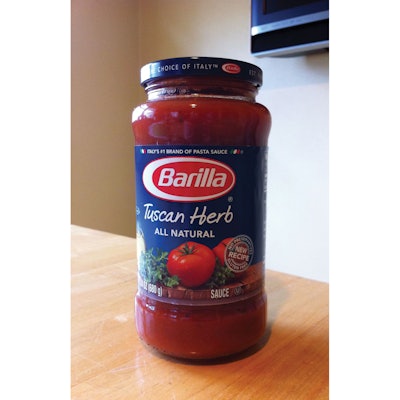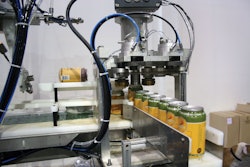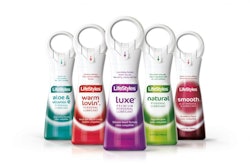
Packaging World:
Does Barilla have any specific goals around packaging sustainability?
Michele Amigoni:
The target at the group level is that we will deliver to the market packaging materials that are technically recyclable at the rate of 98%. We are lucky, because we play with cartons, we play with glass, we play with plastics—but plastics can be tricky.
What have you done to address the challenges around recycling some types of plastic packaging, such as multilayer constructions?
We do a lot of bakery products. For this, we have taken the direction of using mostly mono-material flexible packaging solutions. We have found that polypropylene is the best material to protect our bakery products, keeping them crispy and preventing moisture loss in products such as cakes or mini cakes. In the last 10 years, we have modified a number of material specifications to make them mono-material polypropylene-based.
At this point, polypropylene is something that is technically recyclable: It can be collected, it can be recycled, and it can be burnt in the case where the local recycling system may not be working. But this is after we have downgauged the packaging as much as we can, and after optimizing space in the supply chain.
For cookies, we use a lot of paper laminated to metallized bioriented coextruded polypropylene, which makes the paper sealable and provides barrier. We have modified the technical specifications for this packaging to allow the combination of paper and plastic to be recyclable. So now, the amount of bioriented coextruded polypropylene and the amount of paper are balanced in the pack at a level whereby if you submit the material to a paper mill, they can take a good part of the paper and recycle it without affecting the efficiency of the recycling cycle. This way, it is now possible to collect the new cookie packaging in the recycle bin.
How do you communicate these recycling advances to consumers?
Five years ago, we began placing on each package around the world icons that indicate what the material is and how the waste can be managed. But people also need to check locally because there are different collection systems, based on where they live.
When we launched this program, we discussed which colors to use for the icons, because the color of waste-collection bins varies from town to town and country to country. We decided to select our own colors until local authorities decided on a standard. If, for example, France develops a color standard and it becomes published and official, then we will follow that system. But at the time, we decided just to take the step forward and do it, and overall, we have received very good feedback everywhere.
How have these sustainable packaging efforts affected Barilla’s bottom line?
As of today, we have been working most heavily on the downgauging and space optimization of our packaging. Most of the projects that we have implemented—and there are a lot of them because our range of products is very wide—have brought both sustainability and efficiency results. Some of the new projects that we are looking at will involve a cost increase. For example, if we are looking at a target to make a package recyclable that currently cannot be recycled, we may be looking at a solution that costs more than the one we are currently using. At this point, the effort is mostly in sharing with the entire company the long-term benefits of these choices, in regards to the core concept of “sustainability”: the value of “durability,” for the company, but also for the environment and the communities where the company operates. This concept is clearer and is shared more and more at Barilla, with a great commitment to deliver on opportunities to improve sustainability.
Also, we know that if we make something that is better for the environment, or provides clearer communication to consumers, even if it costs us more, once we do it, it will enhance the quality of the whole category, setting higher standards as references.

























